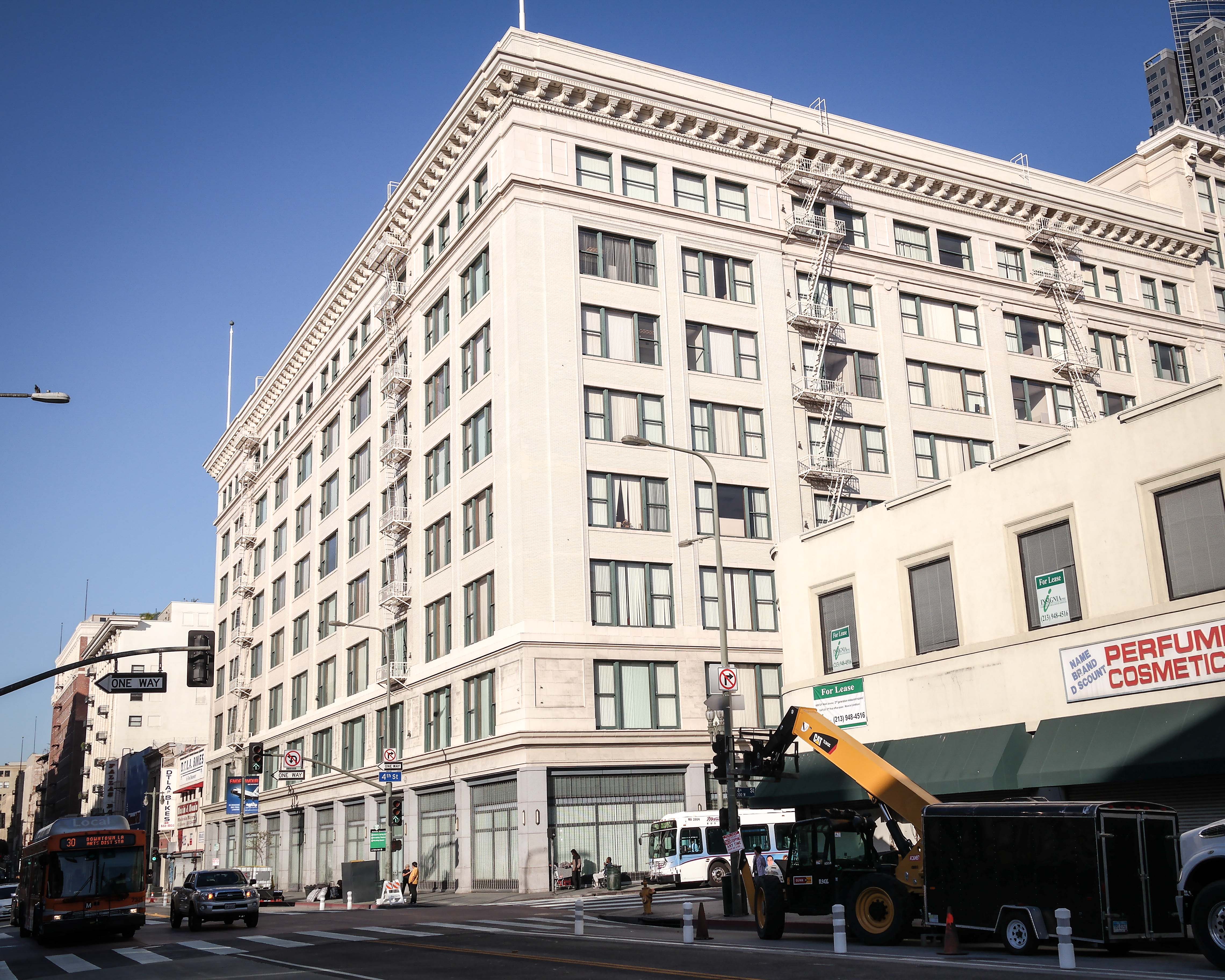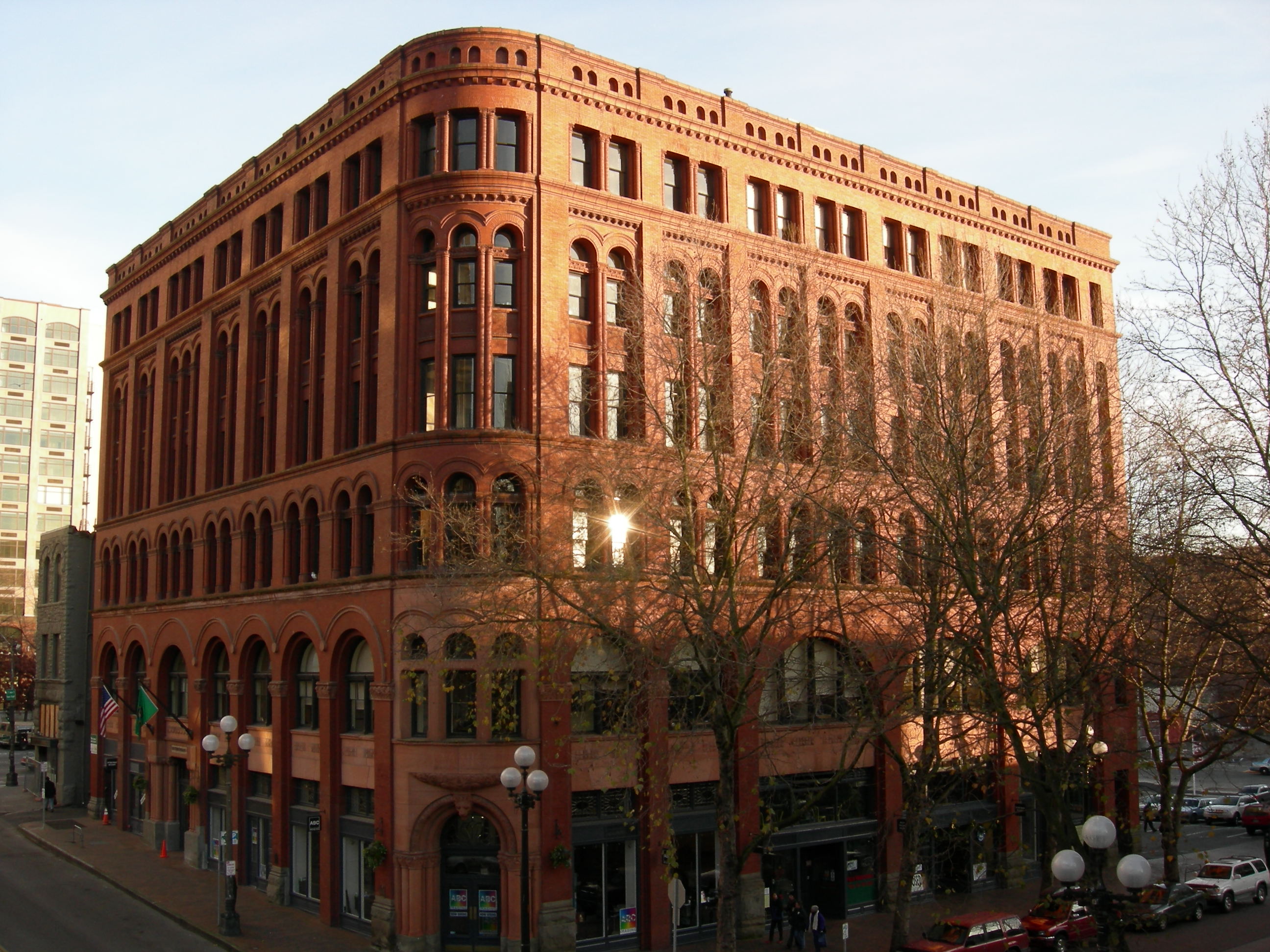|
The Broadway
The Broadway was a mid-level department store chain headquartered in Los Angeles, California. Founded in 1896 by English-born Arthur Letts Sr., and named after what was once the city's main shopping street, the Broadway became a dominant retailer in Southern California and the Southwest. Its fortunes eventually declined, and Federated Department Stores (now Macy's, Inc.) bought the chain in 1995. In 1996, Broadway stores were either closed or converted into Macy's and Bloomingdales. History Origins In 1895, J. A. Williams formed J. A. Williams & Co., built and opened his Broadway Department Store on August 29, 1895. In February, 1896 the store was liquidated, and Arthur Letts bought the name, assets, fixtures, and the building lease for $8377 and, on February 24, 1896, the Broadway started operating under Letts. The previous owners had a good location in a recently constructed building at the southwest corner of Broadway and Fourth Streets, but had all of its assets s ... [...More Info...] [...Related Items...] OR: [Wikipedia] [Google] [Baidu] |
Department Store
A department store is a retail establishment offering a wide range of consumer goods in different areas of the store, each area ("department") specializing in a product category. In modern major cities, the department store made a dramatic appearance in the middle of the 19th century, and permanently reshaped shopping habits, and the definition of service and luxury. Similar developments were under way in London (with Whiteleys), in Paris (Le Bon Marché) and in New York ( Stewart's). Today, departments often include the following: clothing, cosmetics, do it yourself, furniture, gardening, hardware, home appliances, houseware, paint, sporting goods, toiletries, and toys. Additionally, other lines of products such as food, books, jewellery, electronics, stationery, photographic equipment, baby products, and products for pets are sometimes included. Customers generally check out near the front of the store in discount department stores, while high-end traditional department sto ... [...More Info...] [...Related Items...] OR: [Wikipedia] [Google] [Baidu] |
San Francisco Call
''The San Francisco Call'' was a newspaper that served San Francisco, California. Because of a succession of mergers with other newspapers, the paper variously came to be called ''The San Francisco Call & Post'', the ''San Francisco Call-Bulletin'', ''San Francisco News-Call Bulletin'', and the ''News-Call Bulletin'' before the name was finally retired after the business was purchased by the ''San Francisco Examiner''. History Between December 1856 and March 1895 ''The San Francisco Call'' was named ''The Morning Call'', but its name was changed when it was purchased by John D. Spreckels. In the period from 1863 to 1864 Mark Twain worked as one of the paper's writers. It was headquartered at Newspaper Row. The ''Morning Call'' was reported purchased by Charles M. Shortridge of the ''San Jose Mercury'' for $360,000 in January 1895. Shortridge became the sole proprietor and editor. He was elected to the California state legislature in 1898 representing the 28th district (San J ... [...More Info...] [...Related Items...] OR: [Wikipedia] [Google] [Baidu] |
Milliron's Westchester
Milliron's Westchester, later The Broadway-Westchester, was a department store at 8739 S. Sepulveda Blvd., in Westchester, Los Angeles, designed by architect Victor Gruen. Its original design was considered a landmark in exterior architecture of retail stores, although much of the original design is no longer present. The building now houses a Kohl's. Background Originally, in 1942, Frank Ayres & Son, developers were commissioned to create a healthy business district along Sepulveda in the new Westchester community. They tried to lure J. C. Penney as an anchor, but Penney's felt the area was too close to Downtown Inglewood, California, Inglewood. They succeeded in attracting Milliron's, the first branch of Milliron's department store (long known as the Fifth Street Store), which had its flagship store on Broadway, Los Angeles, Broadway in Downtown Los Angeles, then still the city's main retail district lined with large department stores and cinemas. However Milliron's did not have th ... [...More Info...] [...Related Items...] OR: [Wikipedia] [Google] [Baidu] |
Broadway Stores
Broadway Stores, Inc., was an American retailer based in Southern California. Known through its history as Carter Hawley Hale Stores and Broadway Hale Stores over time, it acquired other retail store chains in regions outside its California home base and became in certain retail sectors a regional and national retailer in the 1970s and 1980s. The company was able to survive takeover attempts in 1984 and 1986, and also a Chapter 11 bankruptcy filing in 1991 by selling off most of its assets until August 1995 when its banks refused to advance enough additional credit in order for the company to be able to pay off suppliers. At that point, the company sold itself to Federated Department Stores for $1.6 billion with the acquisition being completed on October 12, 1995. History Early history In 1950, as Los Angeles began to grow in population very rapidly and assumed dominance within the state, the fast-growing The Broadway Department Stores (founded in 1896) based there negotiated an ... [...More Info...] [...Related Items...] OR: [Wikipedia] [Google] [Baidu] |
Hale Brothers
Hale's or Hale Bros., was a department store based in Sacramento with branches throughout the San Francisco Bay Area. In 1880 Prentis Cobb Hale and his two brothers opened the Criterion store in Downtown Sacramento, and in 1881 they renamed it Hale Brothers & Company. The company opened large branches in San Francisco (1892) and San Jose (1896), Salinas, Stockton and Petaluma, and via an acquisition of Whitthorne & Swann in 1906, Oakland. The Sacramento store was last located at 825-831 K Street, with a storefront measuring some 123 feet on K and 160 feet on Ninth. The San Jose store was at the corner of 1st and San Carlos. The San Francisco store was first located at 989 Market Street, then moved to 901 Market at Fifth in a building designed by Reid & Reid. In 1949, Hale's bought their Sacramento rival, Weinstock, Lubin & Co. In the same year, Hale's merged with Los Angeles-based Broadway Department Stores, becoming ''Broadway-Hale Stores'', Carter Hawley Hale Stores'', and ... [...More Info...] [...Related Items...] OR: [Wikipedia] [Google] [Baidu] |
Sacramento
) , image_map = Sacramento County California Incorporated and Unincorporated areas Sacramento Highlighted.svg , mapsize = 250x200px , map_caption = Location within Sacramento County in California , pushpin_map = California#USA , pushpin_label = Sacramento , pushpin_map_caption = Location within California##Location in the United States , pushpin_relief = yes , coordinates = , coordinates_footnotes = , subdivision_type = Country , subdivision_name = United States , subdivision_type1 = State , subdivision_name1 = California , subdivision_type2 = County , subdivision_name2 = Sacramento ---- , subdivision_type3 = Region , subdivision_name3 = Sacramento Valley , subdivision_type4 = CSA , su ... [...More Info...] [...Related Items...] OR: [Wikipedia] [Google] [Baidu] |
Plaza Pasadena
The Paseo is an upscale outdoor mall in Pasadena, California, covering three city blocks with office space, shops, restaurants, a movie theater, and 400 loft-style condominiums (called Terrace Apartment Homes) above. It is located in downtown Pasadena between Colorado Boulevard to the north and Green Street to the south. Paseo Colorado is just east of and connected by a pedestrian bridge, the Garfield Promenade, to Old Town Pasadena, and west of the center of downtown. The mall is located across Green Street from the Pasadena Civic Auditorium in the Pasadena Conference Center. As of 2014, the mall is currently without an anchor retail chain stores since both Macy's and a Gelson's Markets had closed in 2013. History The site was originally occupied by a shopping mall called Plaza Pasadena, which opened in 1980 and featured three anchor stores: J.C. Penney, The Broadway, and May Company California. It was built by The Hahn Company at a cost of $115 million on an 11-acre site and ... [...More Info...] [...Related Items...] OR: [Wikipedia] [Google] [Baidu] |
Streamline Moderne
Streamline Moderne is an international style of Art Deco architecture and design that emerged in the 1930s. Inspired by aerodynamic design, it emphasized curving forms, long horizontal lines, and sometimes nautical elements. In industrial design, it was used in railroad locomotives, telephones, toasters, buses, appliances, and other devices to give the impression of sleekness and modernity. In France, it was called the ''style paquebot'', or "ocean liner style", and was influenced by the design of the luxury ocean liner SS ''Normandie'', launched in 1932. Influences and origins As the Great Depression of the 1930s progressed, Americans saw a new aspect of Art Deco, ''i.e.'', streamlining, a concept first conceived by industrial designers who stripped Art Deco design of its ornament in favor of the aerodynamic pure-line concept of motion and speed developed from scientific thinking. The cylindrical forms and long horizontal windowing in architecture may also have been influenc ... [...More Info...] [...Related Items...] OR: [Wikipedia] [Google] [Baidu] |
Pasadena, California
Pasadena ( ) is a city in Los Angeles County, California, northeast of downtown Los Angeles. It is the most populous city and the primary cultural center of the San Gabriel Valley. Old Pasadena is the city's original commercial district. Its population was 138,699 at the 2020 census, making it the 44th largest city in California and the ninth-largest city in Los Angeles County. Pasadena was incorporated on June 19, 1886, becoming one of the first cities to be incorporated in what is now Los Angeles County, following the city of Los Angeles (April 4, 1850). Pasadena is known for hosting the annual Rose Bowl football game and Tournament of Roses Parade. It is also home to many scientific, educational, and cultural institutions, including Caltech, Pasadena City College, Kaiser Permanente Bernard J. Tyson School of Medicine, Fuller Theological Seminary, ArtCenter College of Design, the Pasadena Playhouse, the Ambassador Auditorium, the Norton Simon Museum, and the USC Pacif ... [...More Info...] [...Related Items...] OR: [Wikipedia] [Google] [Baidu] |
Broadway Building (Hollywood)
The Broadway Hollywood Building (sometimes Broadway Building or Broadway Department Store Building) is a building in Los Angeles' Hollywood district. The building is situated in the Hollywood Walk of Fame monument area on the southwest corner of the intersection referred to as Hollywood and Vine, marking the intersection of Hollywood Boulevard and Vine Street. It was originally built as the B. H. Dyas Building in 1927. The Broadway Hollywood Building is referred to by both its main address of 6300 Hollywood Boulevard and its side address of 1645 Vine Street. The Broadway Hollywood Building is a contributing property to the National Register of Historic Places U.S. Historic District-listed Hollywood Boulevard Commercial and Entertainment District. It has been listed as both a historic district contributing property and individually registered historic property by the city of Los Angeles and the state of California. The building has a neon sign above it that is considered notable a ... [...More Info...] [...Related Items...] OR: [Wikipedia] [Google] [Baidu] |
John And Donald Parkinson
John and Donald Parkinson were a father-and-son architectural firm operating in the Los Angeles area in the early 20th century. They designed and built many of the city's iconic buildings, including Grand Central Market, the Memorial Coliseum and the City Hall. John Parkinson Early years John Parkinson (12 December 1861 - 9 December 1935) was born in the small village of Scorton, in Lancashire, England in 1861. At the age of sixteen, he was apprenticed for six years to Jonas J. Bradshaw, an architect and engineer in nearby Bolton, where he learned craftsmanship and practical construction. He attended night school at Bolton's Mechanics Institute to study architectural drafting and engineering. Upon completion of his apprenticeship at age 21, he immigrated to North America as an adventure; he built fences in Winnipeg and learned stair building in Minneapolis. He returned to England only to discover that the English construction trades demanded more time and service for adv ... [...More Info...] [...Related Items...] OR: [Wikipedia] [Google] [Baidu] |



.jpg)



